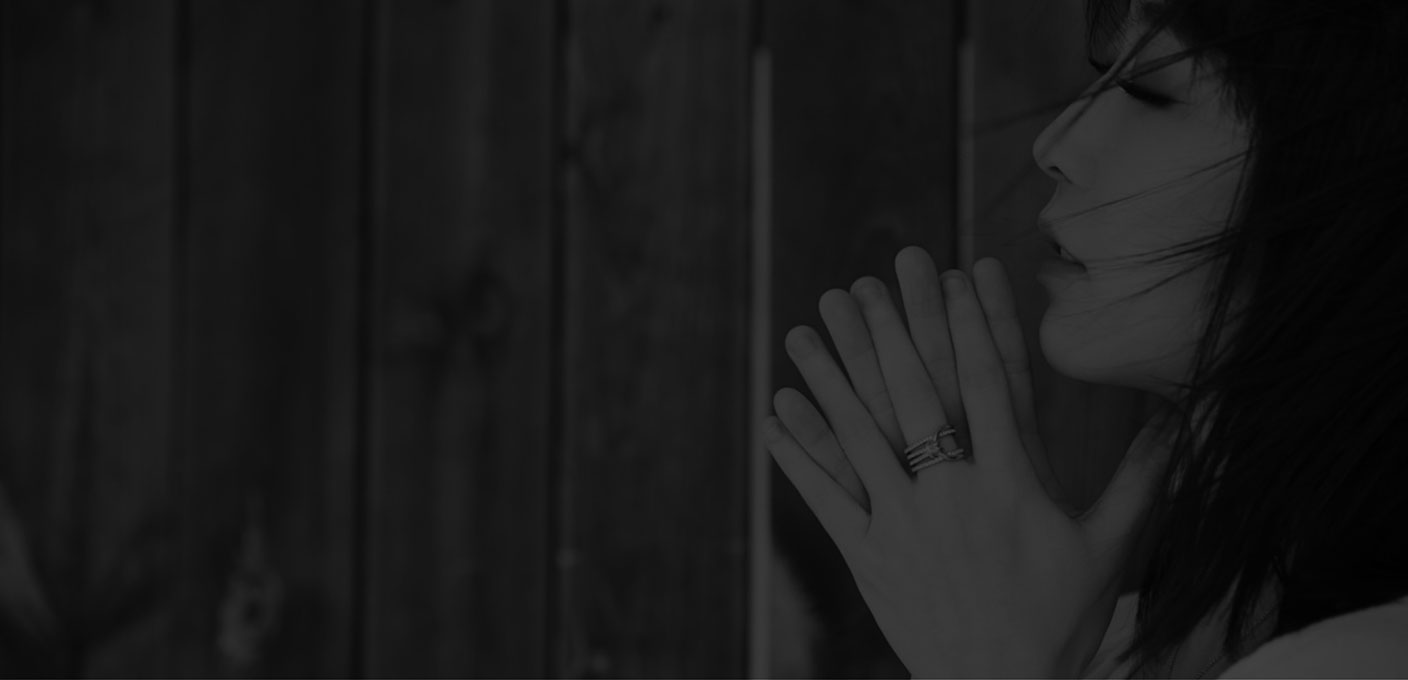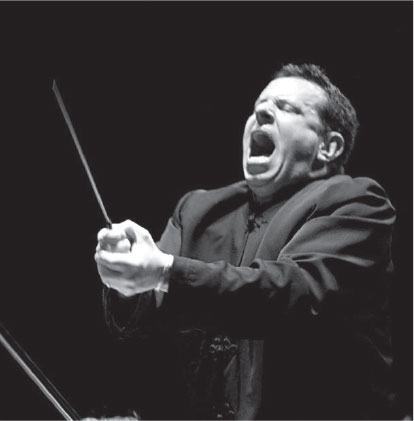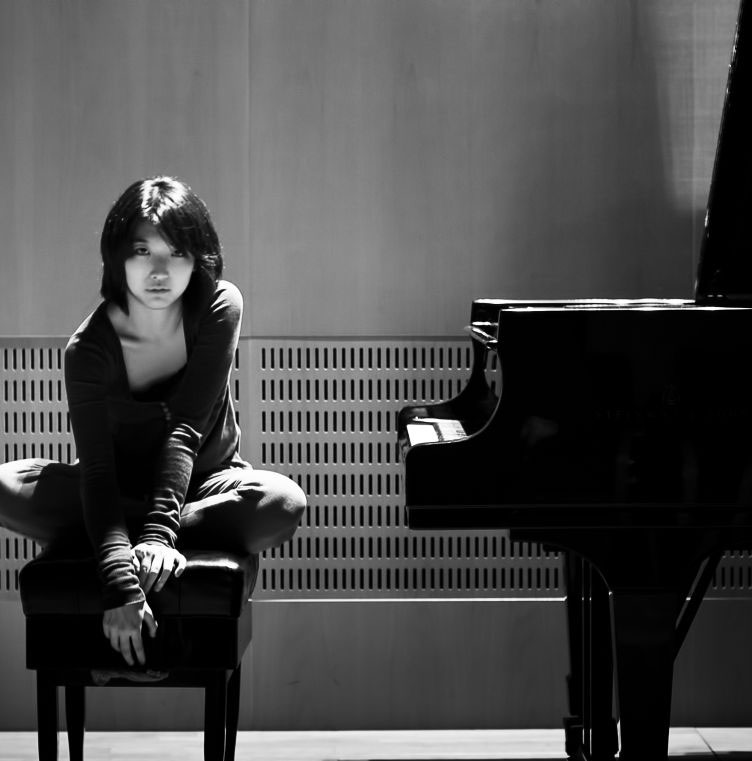Saturday, 27 February 2021
7:30 p.m. MST
(2021-02-28 1:30 a.m. UTC/GMT)
AARP HomeStream Your Helena Symphony
Proclaimed to have “the fastest fingers in the world,” international superstar Pianist Claire Huangci returns as one of Helena’s favorite soloists to perform Brahms’ monumental Second Piano Concerto. The performance begins with a symphony-like miniature by Robert Schumann. Both works proclaim a tremendous grandeur and celebrate the human spirit – and also remind us of the deep friendship between these two composers.
Watch live on YouTube.
Saturday, 27 February 2021
I. Overture: Andante con moto – Allegro (Overture)
II. Scherzo: Vivo – Trio
III. Finale: Allegro molto vivace
I. Allegro non troppo
II. Allegro appassionato
III. Andante
IV. Allegretto grazioso
SHARE AND VIEW YOUR PHOTOS LIVE!
Share your viewing party photos live on our PhotoStream. To get started, text ON to 406.412.2014.
View PhotoStream
Currently in his eighteenth season as Music Director of the Helena Symphony Orchestra & Chorale, Maestro Allan R. Scott is recognized as one of the most dynamic figures in symphonic music and opera today. He is widely noted for his outstanding musicianship, versatility, and ability to elicit top-notch performances from musicians. SYMPHONY Magazine praised Maestro Scott for his “large orchestra view,” noting that “under Scott’s leadership the quality of the orchestra’s playing has skyrocketed.”
Returning to the Helena Symphony stage, internationally renowned, American Pianist Claire Huangci, began her international career at the age of 9, billed a prodigy and playing in a concert for President Bill Clinton at the age of 10. Since then, Ms. Huangci has been awarded many grants, performed numerous concerts and won several prizes, long outgrowing the image of a prodigy and coming into artistic maturity. Ms. Huangci maintains a two- decade collaboration with Conductor Allan R. Scott and have performed together dozens of times.
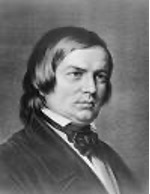
ROBERT SCHUMANN
Born: Zwickau, Germany, 8 June 1810
Died: Endenich, Germany, 29 July 1856
Overture, Scherzo, & Finale, Op. 52
Schumann’s Overture, Scherzo, & Finale is scored for two flutes, two oboes, two clarinets, two bassoons, two horns, two trumpets, two trombones, timpani, and divided strings.
Duration: 18 minutes
Parallel Events / 1841
China gives control of Hong Kong to Great Britain
William Henry Harrison becomes 9th U.S. President and dies one month later. John Tyler becomes 10th U.S. President
Edgar Allan Poe writes first detective story
Wagner’s composes Flying Dutchman opera
Robert Schumann’s First Symphony premieres
Composer Antonín Dvořák, painter Pierre Renoir, and Supreme Court Justice Oliver Wendell Holmes are born
First travel agency is established
First paperback book is published
First baseball game under today’s rules is played
Often remembered more as the husband of the first great female pianist (Clara Wieck Schumann), Robert Schumann was one of the central figures in the development of Romanticism, the period founded by Beethoven. Unlike so many other Romantics, Schumann was an educated artist and a skilled writer and very familiar with the works of Shakespeare, Goethe, Schiller, Jean Paul, and the Greek and Latin classics.
Even though neither of Schumann’s parents were musicians, he was encouraged to study piano. After studying law at his mother’s request, Schumann persuaded his mother to allow him to study music. Perhaps Schumann’s greatest contribution to the nineteenth century was his work as an editor, writer, critic, and member of the intellectual elite. As a publisher of a newsletter (Neue Zeitschrift), which served as a forum for ideas influencing music at the time, Schumann was the first German critic to recognize Chopin, one of the first to admire the music of Berlioz, and the first to predict Brahms’ greatness.
In addition to spreading the “mission” of Romanticism and its literary origins, its connections with liberal thought, and its glorification of feeling and passion over reflection and self-control, Schumann had a spontaneity and marvelously whimsical sense in his music, especially his early works. Even though Schumann seemed to be a forward-thinking artist, he failed to understand the two most progressive musicians of his day, Liszt and Wagner. Avoiding the large operas and tone poems by others, Schumann worshipped at the “alter” of the symphony, specifically those of Beethoven and Schubert.
Creating the perfect tension between the formal Classical era of Mozart, Haydn, and early Beethoven with the personal testaments and passions of the Romantic period, Schumann’s early piano works and songs were expressions of ardor and fantasy coupled with formal novelty. Increasingly, as he matured, Schumann managed to perfect his romantic and classical impulses, combining subjective intensity with formal clarity.
Even more than his music, Schumann is often remembered for his serious mental breakdowns. For Schumann, his creative process was regularly dictated by his mental condition. The depressions and several suicide attempts he suffered from in the early 1830s had seemed to pass since he married his beloved Clara in 1840. The wedding relieved much of Schumann’s anxiety especially because Clara’s father tried to prevent the marriage.
The first year of their marriage was a real emotional adjustment for both (Clara could earn more from a three-week concert tour than Robert could from a year of teaching and composing); however, the year proved to be a highly creative one for the artistic couple. While nearly all of his compositions so far were solely for the piano, Schumann spent nearly the entire year writing almost 170 German art songs for voice and piano. Appropriately, 1840 is now regarded as Schumann’s “Year of Song.”
With his confidence growing, Schumann knew the next step was to enter the symphonic world. His father-in-law often complained that Schumann could not be considered a true composer until he wrote for the orchestra. In 1841, Schumann’s Spring Symphony premiered with Mendelssohn conducting. Though the audience came mainly to hear Clara perform (which she did), the concert is best remembered for Schumann’s debut as one of the finest composers of symphonies, adding him to the lineage left by Beethoven.
Two weeks after the premiere of his first symphony, Schumann wrote an Overture and then quickly composed a Scherzo to accompany the overture. “In a most joyous mood,” he added a finale to the other two movements. In a program with another new symphony by Schumann, his Overture, Scherzo, & Finale received a mediocre reception. Regretting not having Mendelssohn conduct the concert, Schumann’s outlook on the new work was not shaken, saying it “is no less good than the Spring Symphony.” Not being able to get the work published, Schumann revised the finale to the Overture, Scherzo, & Finale, and it was eventually completely published some twelve years after its premiere.
Schumann considered the first movement the Overture, Scherzo, & Finale to be a self-contained work that could be performed on its own; however, the three movements are much more linked than Schumann may have felt. In fact, if he only added a development section to the Overture and added an additional and slower movement, the work could easily be considered a symphony. Opening in dramatic fashion, the Overture begins somewhat dark until a more lively theme lightens the mood. It becomes a movement full of grace and spirit, and in the end, is wonderfully pleasant. The Scherzo is one of Schumann’s finer examples as a prolific composer reminiscent of Beethoven, whereby Schumann masterfully creates an energetic movement based on a tripping dotted rhythm until a graceful middle section (the trio) provides some relief. With the addition of optional trombones, the third and final movement is equally as rhythmic, but far more lyrical and majestic.
Following these two years of immense creative output, Schumann collapsed from exhaustion and overwork, and a new series of depressions started. By the time he was 34 he could not even listen to music as “it cuts into my nerves as if with knives,” Schumann explained. Romantically enough, Schumann died in a lunatic asylum, suffering nervous breakdowns and hallucinations of demons and angels most of his life. Today, medical opinion explains that Schumann’s symptoms were most likely caused by syphilis, which he contracted before his marriage to Clara. By his mid-forties Schumann’s health greatly decline and in 1854 he threw himself into the Rhine River, where he was rescued and taken to an asylum where he lived another two and a half years in total misery.
By Allan R. Scott ©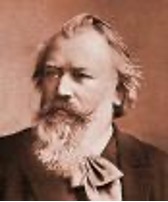
JOHNANNES BRAHMS
Born: Hamburg, Germany, 7 May 1833
Died: Vienna, Austria, 3 April 1897
Piano Concerto No. 2 in B-flat major, Op. 83
Brahms’ Second Piano Concerto is scored for piano solo, piccolo, two flutes, two oboes, two clarinets, two bassoons, four horns, two trumpets, timpani, and divided strings.
Duration: 46 minutes
Parallel Events / 1881
James Garfield becomes 20th U.S. President and is assassinated 6 months later. Chester A. Arthur becomes 21st President
Russian Czar Alexander II is assassinated
Kansas becomes first state to prohibit alcohol
Clara Barton establishes the American Red Cross
Booker T. Washington establishes Tuskegee Institute
Barnum & Bailey Circus debuts
Boston Symphony Orchestra performs first concert
Mysteries of Sherlock Holmes premiere
Renoir paints On the Terrace
Artist Pablo Picasso, composer Béla Bartók, philosopher Pierre Chardin, Pope John XXIII, and film maker Cecil B. DeMille are born
Writer Thomas Carlyle, composer Modest Mussorgsky, and outlaw Billy the Kid die
After Beethoven left the world nine great symphonies, very few composers attempted to rise to the challenge of writing a symphony. As a result, most composers produced works that were less structured than a symphony and more programmatic, such as operas or tone poems. In the immediate post-Beethoven world, the majority of composers followed the leadership of opera composer Richard Wagner, who led the movement of a new German school of composing. More exotic instruments such as the tuba and English horn were used in the orchestra, the number of strings tripled, and the overall sound took on larger-than-life images and intensities.
Composers throughout the world followed this new movement, what is referred to today as the Romantic Era (1820-1900). Started by Beethoven, the Romantic Period is principally focused on the will, dreams, hopes, disappointments, fears, or any emotion or desire of the writer. The art and the artist are inseparable, where in the previous eras of Mozart and Haydn (Classical) or Bach and Handel (Baroque), artistic output was simply another occupation not prone to personal passions or influences.
While very much a German composer, Johannes Brahms rejected this new way of thinking. The son of a mediocre musician, Brahms embraced the more structured forms of the Classical era, including Beethoven who was the bridge between the Classical and Romantic periods. Above all else, Brahms hated wearing his heart on his sleeve and tried to avoid using music as a means to paint pictures or tell stories. He preferred more intangible works. Even Brahms’ funeral mass, German Requiem (his first major success), avoided the liturgical text that traditionally employed the words from the funeral mass. Instead, Brahms used the texts from the more poetic Beatitudes and suggested that death is more concerned about consoling the living than with the one who died (“Blessed are they that mourn for they shall be comforted.”)
Yet in a sense Brahms was more of the Romantic Era than most of those who branded him an anti-Romanticist. In nearly every work Brahms wrote, he composed from personal experience, especially heartache. Romantic artists seemed to not only embody their works, they are plagued with an “inner demon,” as Beethoven called it, which aided their plight to express themselves artistically.
Beethoven lost his hearing, Tchaikovsky struggled as a homosexual with serious bouts of depression, and Robert Schumann went insane. Looking at Brahms’ life and music, it is clear he suffered from a more common and perhaps more painful demon – loneliness. Ironically and tragically, Brahms loved the wife of one of his greatest supporters and closest friends – Robert Schumann. Clara Schumann happened to be one of the world’s finest pianists and the first major woman pianist.
After Robert Schumann’s death in 1856, Brahms and Clara decided to go their separate ways, but their friendship remained the deepest and only emotional anchor Brahms ever knew. Artistically, the heartache and anguish sowed the seeds of several major compositions, many of which took years to complete.
As a craftsman, Brahms was a perfectionist and he sought to refine and finish every moment of music to absolute perfection. He offered advice to a fellow musician saying, “Go over it and over it again and again until there is not a bar you could improve on….Whether it is beautiful also is an entirely different matter, but perfect it must be.” Unlike Beethoven, Brahms really did not have a steady patter of evolution and progress in his works. Rather, Brahms seemed complete as an artist from the start. Robert Schumann observed in a famous article that Brahms was one of “music’s mysteries in arriving fully armed, like Athena from the head of Zeus.”
As a result, Brahms became the heir-apparent to Beethoven even before Brahms completed his first of only four symphonies. Brahms surpassed his contemporaries in his ability to control the intertwining melodic lines coupled with richly expressive harmonies. Yet all of this was framed in the methodical and structured styles of his immediate predecessors, like Beethoven, Mozart, and Haydn. Brahms’ imaginative skill to phrase a musical line with the seemingly perfect orchestral timbres and colors is unprecedented, even today.
Brahms’ published works include the Variations on a Theme of Haydn,the Academic Festival Overture, the Tragic Overture, sonatas for piano, violin, cello and clarinet, piano trios, quartets and a quintet, concertos for piano, violin, and cello, a string quartets, many works for solo piano, organ preludes, many songs, vocal quartets and duets (Liebeslieder Waltzes, Zigeunerlieder), choral works (German Requiem, Alto Rhapsody, Nanie, Gesang der Parzen, Schicksalslied), and four perfect symphonies.
Just before his 45th birthday, Brahms began sketching themes for a second piano concerto. His first piano concerto, completed almost twenty years earlier, had met with a less than enthusiastic reception, and Brahms deliberately avoided tackling another. By 1878, however, Brahms was now a famous and critically acclaimed composer, with two symphonies that were already considered two of the greatest works ever written. Brahms felt somewhat secure with his own abilities and his reputation, so he welcomed the challenge of composing a new piano concerto, saying, “A second will sound different.”
During a trip to Italy Brahms abandoned the piano concerto in order to compose a violin concerto, leaving the piano concerto untouched for the next three years. Upon completed the work in 1881, Brahms sarcastically referred to the Piano Concerto No. 2 as “a tiny little piano concerto with a wisp of a scherzo.” Knowing full well that this work was one of the largest piano concertos since Beethoven’s Emperor Concerto, Brahms created a work that not only rivals any piano concerto today, but remains one of the most colossal as well as ethereal works in all of music.
The Second Piano Concerto does not only follow the traditional structure, it adds to it by including an additional movement (four instead of the typical three). The four movements put extreme demands on the soloist, both in endurance and because the second movement (scherzo) needs to be energetically offset from the first movement, yet must not detract from the first movement’s fire. In addition, the soloist has few outward displays of virtuosity and therefore needs to be a more sensitive partner with the orchestra than in most concertos, as the piano plays passages of octaves and arpeggios as almost a part of the orchestration’s color and texture.
The first movement opens with one of the most memorable and dignified solos for horn, followed by the piano soloist’s entrance in a cadenza-like passage where the soloist remains unaccompanied by the orchestra. The twenty-minute movement transforms from heavenly bliss to a stormy aggressiveness that only Brahms can do so effortlessly. A non-traditional second movement follows, complete with wonderful contractions, as the movement is dark yet passionate. The concerto seems to come to another peaceful beginning as a solo cello opens the third movement; Brahms later uses this melody in his song “Immer leiser wird mein Schlummer” (“Ever softer is my slumber”). The piano builds on the cello melody in another quiet cadenza. Although the central section of the third movement becomes more intense, the overall effect of the movement is of peaceful introspection. The closing movement is nothing short of graceful. Structured in a rondo (refrain-verse-refrain or A-B-A-C-A), the final movement expands to huge proportions in order to balance what has come before. The orchestra and soloist share equally in a rousing, brilliant climax to close.
Brahms’ Second Piano Concerto overall exhibits the complex individual that Brahms was. Often considered a stern and somewhat bitter man, Brahms was also known to welcome the presence of children during his daily walks. He loved the simple, comfortable pleasures of plain, abundant food, new wine, and well-worn clothes, but composed the most sophisticated music since Beethoven and moved among the highest echelons of musicians and society to showcase his music. He could disparage even such a monumental undertaking as his Second Piano Concerto as a “tiny little piano concerto,” but at the same time was so serious about his work that he became violent over any intrusion while composing.
The contradictions that marked Brahms’s personal life, most prominently his love for Clara Schumann, his best friend’s wife, are beautifully captured in the Second Piano Concerto in a “sober, reflective, and philosophical” manner, as musicologist Milton Cross suggests. Renowned pianist Vladimir Horowitz called the work the greatest music ever composed for piano, yet ironically the Concerto was inspired by two light-hearted and seemingly meaningless trips to Italy. The contradictions play to the listener as well, as the Second Piano Concerto is complete with such majestic moments full of pomp and circumstance coupled with unbearable beauty that one is mesmerized in sheer awe – leaving us realizing that Brahms’s desire for perfection is perhaps
